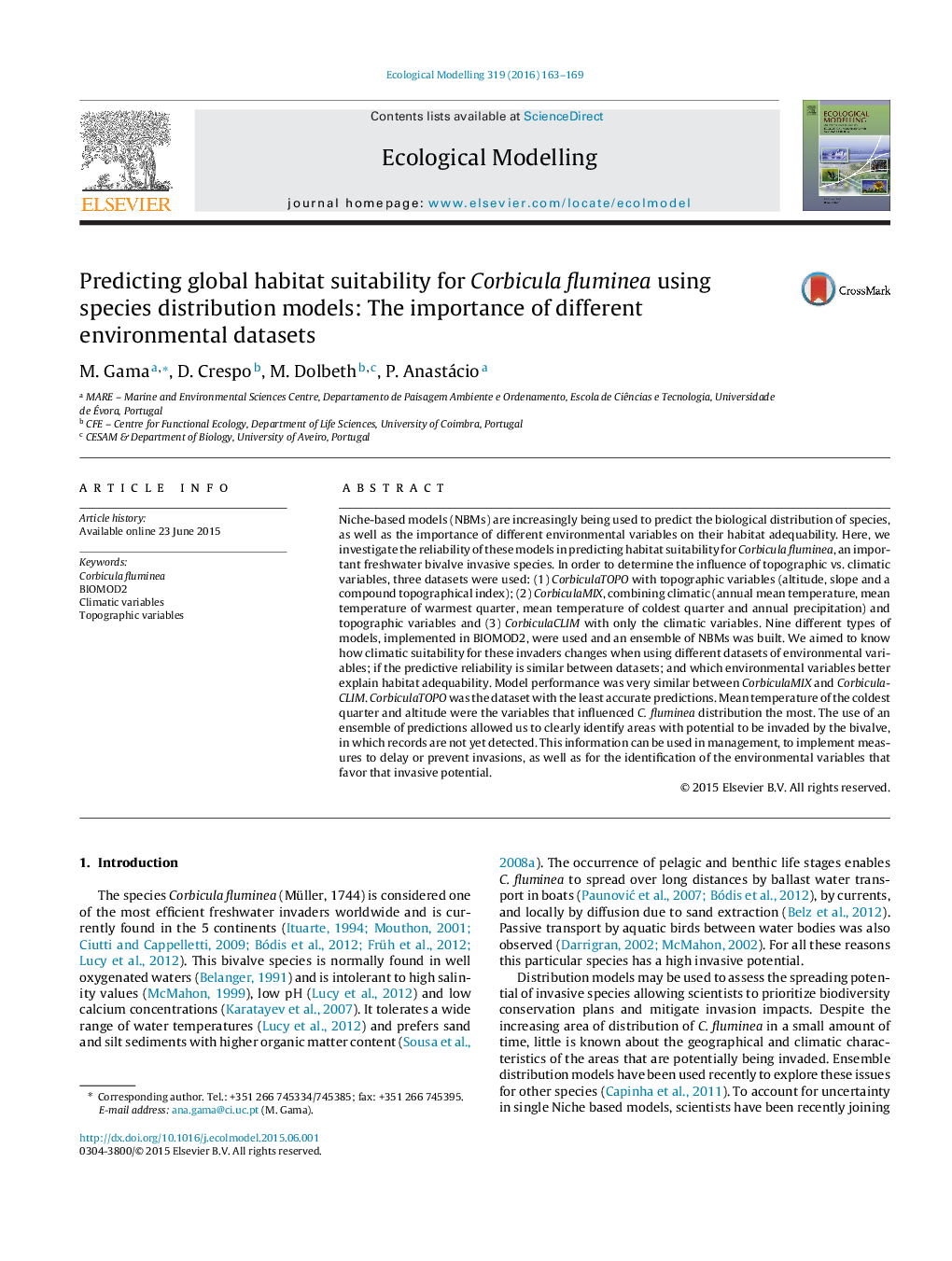| Article ID | Journal | Published Year | Pages | File Type |
|---|---|---|---|---|
| 4375619 | Ecological Modelling | 2016 | 7 Pages |
•Corbicula fluminea worldwide distribution was modeled using different environmental datasets.•The climatic environmental variables led to more accurate modeling.•South African and Australian environments are particularly prone to invasion.•Results may support the introduction of measures to delay/prevent invasions.•Ensemble models can help understanding the threat posed by invasive species.
Niche-based models (NBMs) are increasingly being used to predict the biological distribution of species, as well as the importance of different environmental variables on their habitat adequability. Here, we investigate the reliability of these models in predicting habitat suitability for Corbicula fluminea, an important freshwater bivalve invasive species. In order to determine the influence of topographic vs. climatic variables, three datasets were used: (1) CorbiculaTOPO with topographic variables (altitude, slope and a compound topographical index); (2) CorbiculaMIX, combining climatic (annual mean temperature, mean temperature of warmest quarter, mean temperature of coldest quarter and annual precipitation) and topographic variables and (3) CorbiculaCLIM with only the climatic variables. Nine different types of models, implemented in BIOMOD2, were used and an ensemble of NBMs was built. We aimed to know how climatic suitability for these invaders changes when using different datasets of environmental variables; if the predictive reliability is similar between datasets; and which environmental variables better explain habitat adequability. Model performance was very similar between CorbiculaMIX and CorbiculaCLIM. CorbiculaTOPO was the dataset with the least accurate predictions. Mean temperature of the coldest quarter and altitude were the variables that influenced C. fluminea distribution the most. The use of an ensemble of predictions allowed us to clearly identify areas with potential to be invaded by the bivalve, in which records are not yet detected. This information can be used in management, to implement measures to delay or prevent invasions, as well as for the identification of the environmental variables that favor that invasive potential.
